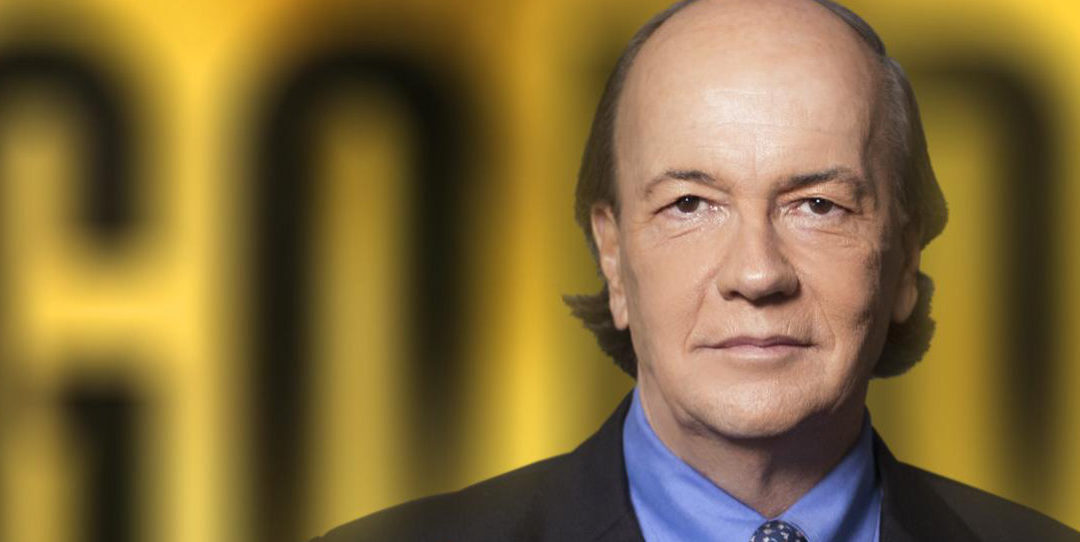
by John | Aug 30, 2017 | Capital Appreciation, Currencies, Geopolitical Risk Protection, Preservation of Purchasing Power
Whatever vestigial link between US dollars and gold ended after Bretton Woods was terminated on 15 August 1971. The classic gold standard was abolished long before in 1933 when the despotic executive order of United States President Franklin D. Roosevelt that made it illegal for citizens in the land of the free to own gold.
There are periodic calls to return to a gold standard as a way to reign in government spending. The return to a pre-1933 gold standard would be a huge step in the right direction.
A true gold standard uses gold as money. A true gold standard in the US would redefine dollars as a quantity of gold. A true gold standard is NOT saying that gold is worth $35 per ounce as was the case in Bretton Woods.
This is explained in fantastic detail by Mises Institute Senior Fellow Joseph T. Salerno in his lecture Gold Standards: True and False.
A Return to the Gold Standard in the US?
It sounds click-baity to me too, but Jim Rickards is predicting $10,000 gold as the result of a currency reboot. The link above is to a sales page (which I get zero benefit from and considered not linking to) that explains in his own words why Rickards thinks Trump will return the US to a “gold standard”.
James G. Rickards is a New York Times bestselling author who appears on networks like RT, CNBC and Bloomberg. He’s testified in front of congress, he’s done some consulting on currency for the CIA and Pentagon. So there are some reasons to listen to what he says and at least evaluate his rationale and his arguments.
If I can quickly summarize his argument it’s that the US is deeply in debt, debt has crushed the middle class, a gold standard is one of the keys to “Making America Great Again” and so President Trump going to move the US back onto a gold standard. Rickards also claims he has some inside information that gives him additional reason to believe a return to such a gold standard is likely.
I agree the US is deeply in debt. I also agree the economy is broken and stacked against the middle class in favor of the super-wealthy. I also agree that a return to a classic gold standard similar to what existed pre-1933 would help America.
There is also some evidence that Trump is receptive to the gold standard.
Would Trump Support a Gold Standard?
Trump has stated to GQ: “Bringing back the gold standard would be very hard to do, but boy would it be wonderful. We’d have a standard on which to base our money.” In the same montage of questions he also stated that Justin Bieber shouldn’t be deported and that he’s not a fan of Man Buns.
Trump has also tweeted this:
Although “gold” here could simply mean wealth.
As far as I can tell Donald Trump is not a systematic thinker. He doesn’t have a set of principles with which he evaluates problems and situations. I think Trump’s “philosophy” is basically “I’m a smart guy with good business sense. So I’m going to use my gut and my experience to make ad hoc judgments about what to do.”
Although he probably wouldn’t use the term ad hoc.
So could Trump be in favor of a gold standard? Who knows? Even if he was in some way at some point in the past who knows what he would decide today. Just look at his 180 turn on the war in Afghanistan as one example of his fickleness.
Where does Rickards get $10,000?
Rickards uses a fairly basic calculation based on what he thinks the world money supply will be, how much gold there is and a 40% backing to get $10,000 gold.
Rickards writes that the US government would keep the price at this level by simply conducting some “open market operations” in gold:
The Federal Reserve will be a gold buyer if the price hits $9,950 per ounce or less and a gold seller if the price hits $10,050 per ounce or higher
And this is really the rub. Such a price peg is not a return to a true gold standard. It would not change the US government’s fiat monetary system in any meaningful way.
Dollar to Gold Price Pegs are not a True Gold Standard
The plan Rickards describes is essentially the same as a bill that was proposed in 2013. Mises Institute fellow Joseph T. Salerno explains how such a fake gold standard would not help at all. A true gold standard defines dollars (or other currency) as a certain weight of gold. For example, the definition of a dollar used to be 1/20th of an ounce of gold (roughly). A $20 bill was not the money per se but a claim to one ounce of gold.
The “gold standard” Rickards speaks of is simply fixing the price of gold in dollars.
I Would Like Gold at $10,000
All else equal I would like gold at $10,000. Sure, if I wanted to add to my holdings it would be cost prohibitive, but since I already own some gold a price increase to $10,000 via Federal Reserve open market operations would be of benefit to me.
However, if the dollar collapsed and a loaf of bread costs $10,000 I’m probably not better off. After all no sane person would want to be a millionaire in Zimbabwean dollars in 2008.
This fake gold standard Rickards is predicting certainly wouldn’t help the US economy at large. As I mentioned above, it would not be any significant change to the fiat monetary system. A price peg of gold in terms of dollars is NOT a gold standard. If anything I think it would be horrible optics for the US government and shake the world’s confidence in the dollar. It would effectively be a revaluation down of the dollar, at least relative to gold, and the Fed’s balance would very likely have to massively expand in order to bid gold up to $10,000.
A Return to the Gold Standard Seems Unlikely
A return of the United States to a true gold standard seems very unlikely. A fake gold standard as described by Rickards is more likely than a return to a true gold standard–but still a long shot. I do believe gold is a fantastic long term investment but I also believe it will take the market waking up to the problems of the global financial system and not an act of government.
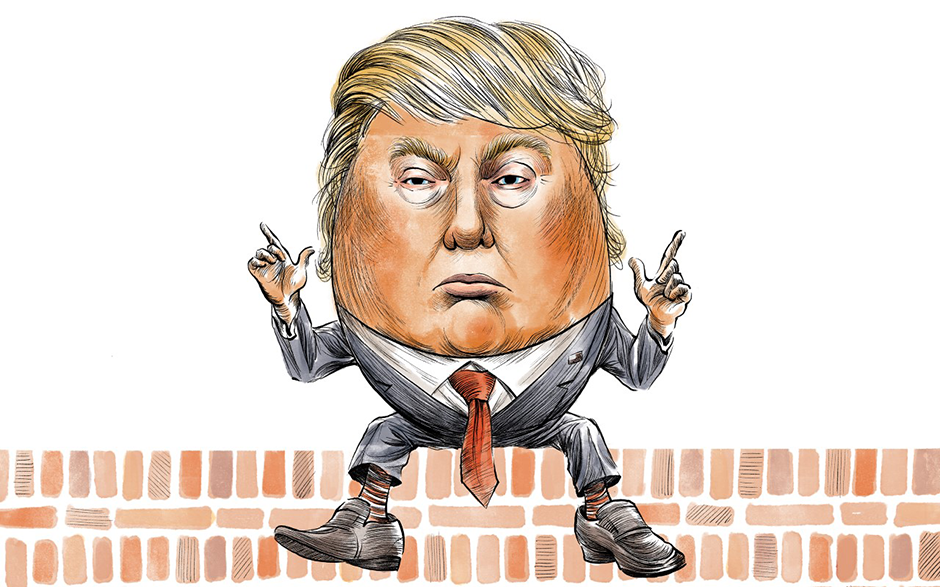
by John | Aug 27, 2017 | Economic Outlook, Geopolitical Risk Protection, Wealth Protection
Article image above is by Chloe Cushman
Humpty Dumpty sat on a wall,
Humpty Dumpty had a great fall.
All the king’s horses and all the king’s men
Couldn’t put Humpty together again.
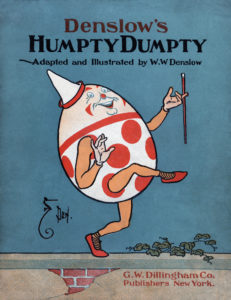
Denslow’s Humpty Dumpty
Back in February of 2016 Candidate Donald J. Trump stated, “I hope I’m wrong, but I think we’re in a big, fat, juicy bubble.”
Source: https://www.cnbc.com/2016/02/08/trump-markets-in-a-big-fat-juicy-bubble.html
In the first presidential debate in September of 2016 Trump stated the US economy is, “in a big, fat, ugly bubble.”
He also presciently said that when Obama returns to the golf course (did Obama ever leave the golf course?) that the U.S. Federal Reserve would raise interest rates.
Source: http://www.businessinsider.com/we-are-in-a-bubble-trump-debate-attacks-federal-reserve-chair-yellen-2016-9
Candidate Trump seemed to have some understanding that U.S. Stocks and Bonds are in a Bubble.
So President Trump should be concerned that the bubble is going to pop on his watch. But he seems to have pivoted to taking credit for the stock market just a few weeks after his election.
“We’re doing really well. The fake news media doesn’t like talking about the economy. I never see anything about the stock market” setting new records every day, he said.
Source: https://www.cnbc.com/2017/02/16/donald-trump-tweets-that-hes-the-reason-the-stock-market-is-rallying.html
I don’t know that Trump listens to any of his advisors, but if he did and I was one of his advisors, I’d encourage him to distance himself from the stock market.
Why?
President Obama got the advantage of the stock market high induced by low interest rate monetary heroin, and Trump is likely going to have to cope with the inevitable stock market crash and withdrawal.
President Trump is a Humpty Dumpty, perched upon the top of a stock market bubble, which is about to collapse.
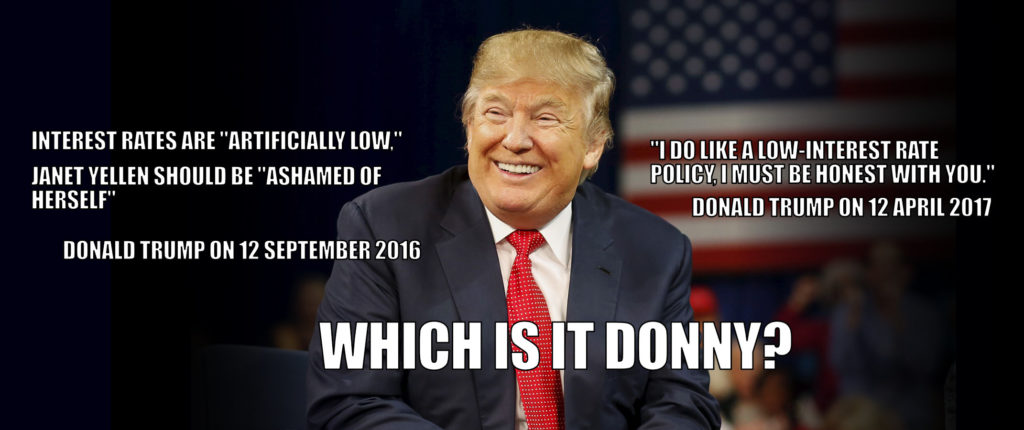
President Obama had just 2 rate hikes over 8 years
President Obama began his presidency going into a time when the US Federal Reserve was providing extremely accommodative monetary policy. He then had near zero interest rates for the first 2,521 days of his presidency (just one month shy of 7 years out of 8) then the Fed Funds rate was hiked once for his last year.
Technically it was hiked a second time, but only for the last month he was in office and after Trump had won the election.
Effectively, rates were only hiked once in 8 years.
Rates have been hiked 3 times since Trump was elected
If you count the last rate hike during the Obama presidency, Obama had two rate hikes. If you consider the second hike during Obama’s Presidency was just 37 days before he would vacate the White House, he really only saw one rate hike.
Within 54 days of Trump’s inauguration the Fed raised rates from 0.50–0.75% range to the 0.75-1.00% range. Within 145 days of Trump’s inauguration, rates increased again to the 1.00-1.25% range. So Trump has began his presidency going into less accommodative monetary policy and has already seen 2 hikes during his presidency and 3 since he was elected.
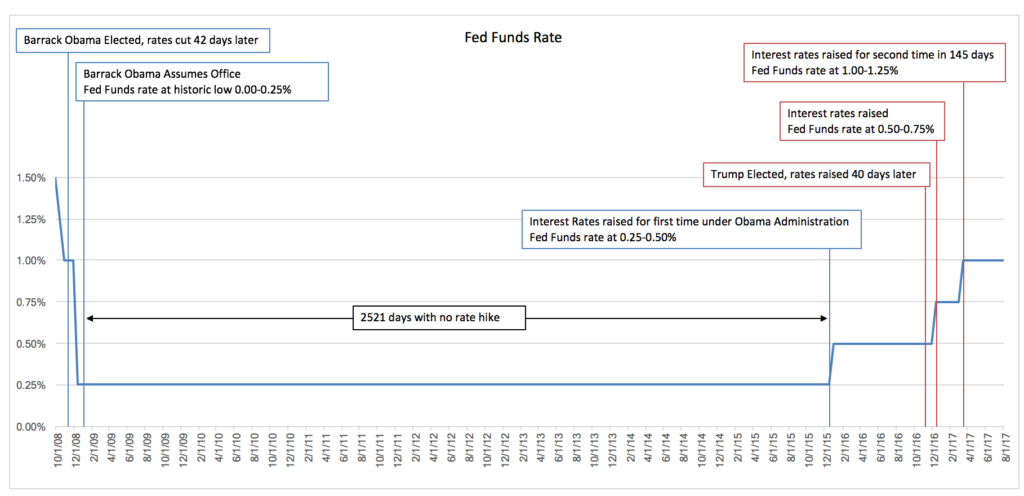
Setting Trump up for a Fall
Virtually no one who lives inside the Washington, D.C. beltway likes Trump. The established powers in Washington hate Trump. The leaders in Trump’s own party hate him.
Trump’s whole presidency was based on spitting in the face of the established powers in the Imperial City of Washington, D.C.
Fed Chair Janet Yellen is a Democrat appointed by Obama and she was criticized by Candidate Trump during the campaign–if she is like virtually everyone else in the Imperial City then she can’t stand Trump.
Artificially low interest rates that are manipulated down by the US Federal Reserve and other central banks cause asset values to become artificially inflated in a bubble. President Obama received the “benefit” of these artificially low interest rates: the economy was able to limp along and the stock market continued to rise as valuations were artificially inflated by the cheap money.
In order for the US Federal Reserve to normalizes interest rates they need to pop the asset bubble they’ve created. I don’t know if the Fed realizes they’ve created a bubble, but if they do, then popping it on Trump’s watch would be ideal from their perspective.
What better way to get Trump out of office than to raise interest rates, pop the stock market bubble which would result in a recession and then ensure that President Trump is not reelected?
In the Machiavellian world of short term political expediency, Trump would do well to distance himself from the markets and put pressure on the fed to retain a more accommodative policy. It will make the problems worse but it will delay the pain. It’s certainly not the right thing to do but it’s what Presidents have been doing for decades.

by John | Aug 21, 2017 | Preservation of Purchasing Power, Wealth Protection
Gold recently traded above $1,300 per troy ounce for the first time time in 2017. It immediately fell back down to the mid $1,280s. This is the third time the price of gold has been beaten back down when attempting to breakout above $1,300.

Price Resistance at $1,295 continues to hold.
In April of this year I made some “predictive guesses” as to the price of gold. Thus far gold has traded around the purple dotted line that I anticipate will be the general price of the yellow metal.
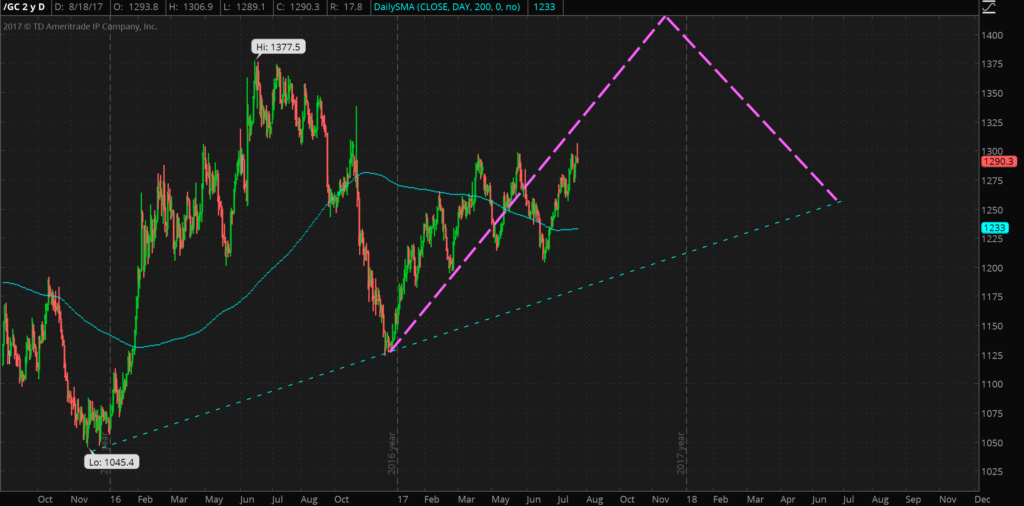
The purple line is my predictive guess as to the price of gold, made in April of 2017.
My predictive guess calls for gold to trade up to $1,400 in November before tailing off again. I expect gold to continue to trend slowly upward in the long term, until there is some large external catalyst such as a stock market crash, physical supply shortage, war or currency crisis, that propels the price upward.
I think holding some gold in one’s physical possession is wise, it’s also important to hold some offshore out of one’s home jurisdiction. While I only hold a portion of my assets in physical gold and silver I think it’s an important component of a diversified portfolio.
Click here to learn about one of my favorite ways to own physical gold.
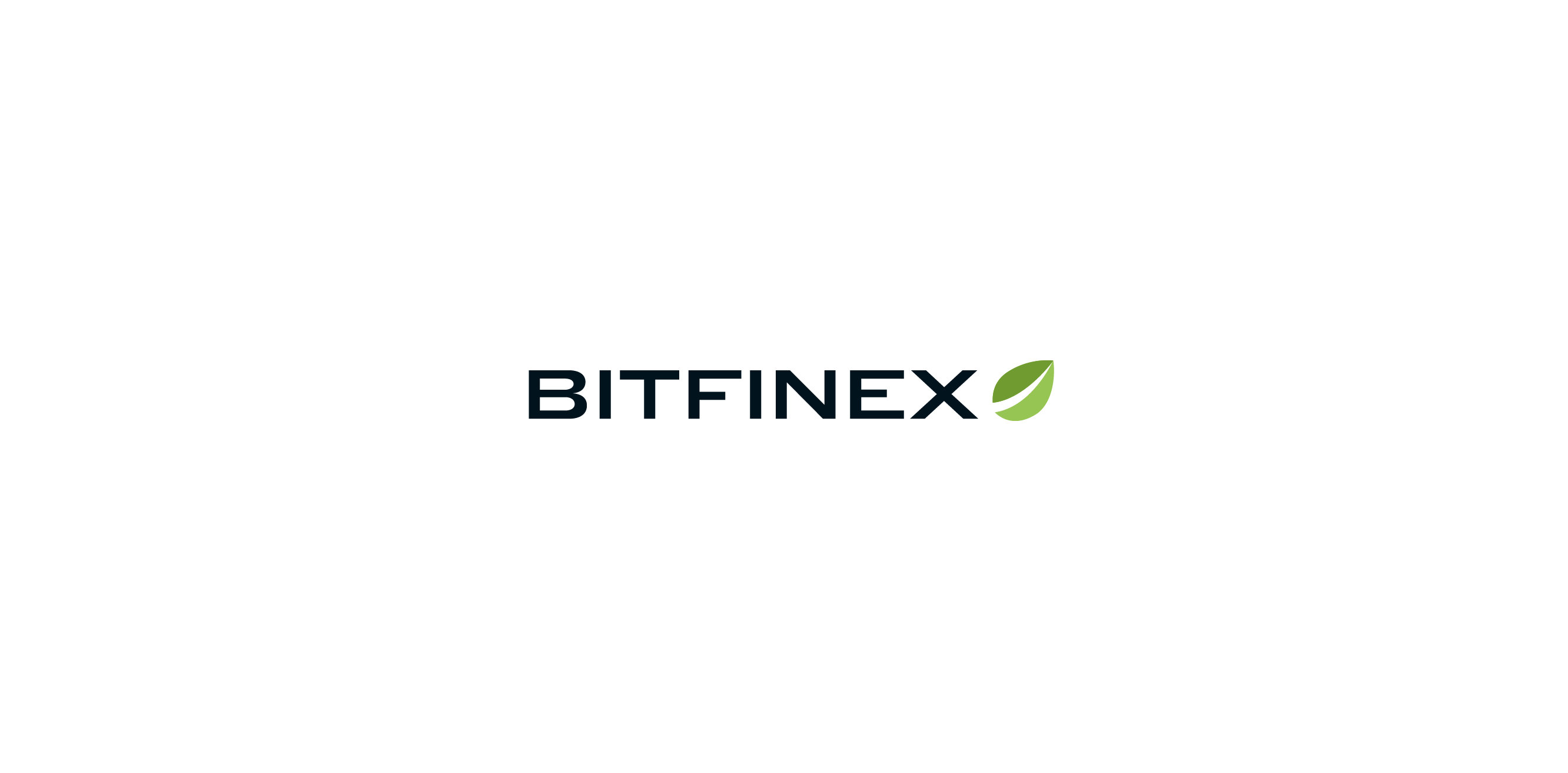
by John | Aug 19, 2017 | Business, Cryptocurrency, Geopolitical Risk Protection
The United States is steadily becoming a worse place for individuals to do business.
The financial services industry in particular faces onerous regulations imposed by the US government–under the auspices of security and combating terrorism.
While the efficacy of the US regulators’ draconian standards in preventing money laundering and terrorism is debatable–the impact on law abiding consumers is certain.
US consumers and investors alike are the victims of the US government’s attempt to control.
A recent example is that US citizens will no longer be allowed to have accounts on Bitfinex. Bitfinex announced earlier this month they would be dropping U.S. accounts and list the following reasons:
While we have been able to normalize banking for some corporate customers and individuals in certain jurisdictions, compliant banking solutions for U.S. individuals remain elusive. We have been slowly and selectively inviting users in particular jurisdictions who meet set criteria to start using banking channels that have come online. This process is ongoing.
A surprisingly small percentage of our revenues come from verified U.S. individual accounts while a dramatically outsized portion of our resources goes into servicing the needs of U.S. individuals, including support, legal and regulatory.
We anticipate the regulatory landscape to become even more challenging in the future.
Bitfinex is not based in the United States. Exchanges based in the U.S. are better positioned to properly service retail U.S. customers.
In short:
1) It’s difficult to comply with US banking regulations
2) It’s expensive to comply with US banking regulations
3) Bitfinex expects regulations to become more challenging (probably meaning more expensive and more difficult) in the future
If the United States wants to remain competitive in the future and the new economy regulators need to back off.
Margin funding on Bitfinex is one of the methods I use to grow and protect my wealth. Very soon this will no longer be an option.
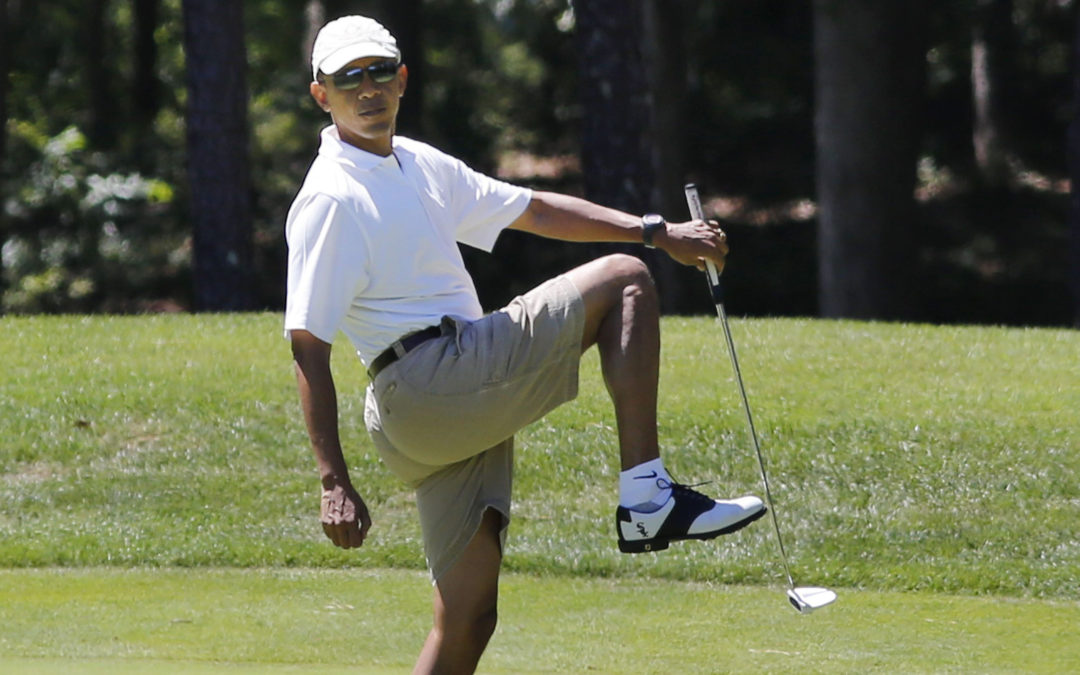
by John | Aug 6, 2017 | Economic Outlook, Geopolitical Risk Protection
Former President Barrack Obama had many advantages in his presidency. He had the vast majority of the media firmly behind him, a sense of inevitability, support from the establishment, strong support from higher education institutions and he ran against weak candidates.
One of his greatest advantages was the unprecedentedly low interest rates throughout his eight years in office.
In fact no President has ever had lower rates for longer.
As President Obama was fond of reminding folks: America was recovering from the worst economic crisis since the great depression. His defenders can point to the fact that rates were that low because they needed to be.
Before we go Any Further
Now before I go any further, I want to make two points. One, the United States President does very little to impact how the US economy fairs.
In my opinion the President has more power than he should have but less than people realize. The President gets blamed when the economy is doing poor and gets credit when it is doing well. But it’s all unwarranted.
The second point is that artificially low interest rates are destructive. They cause bubbles and the ensuing financial crises. The 2000 dot com bust, the 2008-2009 financial crises were caused by a number of factors, but one large and consistent factor was artificially low interest rates set by the U.S Federal Reserve. Interest rates should be determined via a market based price discovery system not by the soviet style central planners occupying the Eccles Building.
The Obama Presidency was marked by the Lowest Interest Rates Ever
It’s almost comical how tightly low interest rates corresponded with the Obama Presidency. After he was elected, but before he took office the US Federal Reserve lowered interest rates to 0.25%. The lowest they have ever been.
Artificially low interest rates do in the short term provide an economic high similar to the short term euphoric feeling narcotics are reported to produce. But in the long term they are incredibly destructive to an economy.
But politicians either don’t understand this or simply don’t care and want to goose the economy so they can get re-elected. More likely both.
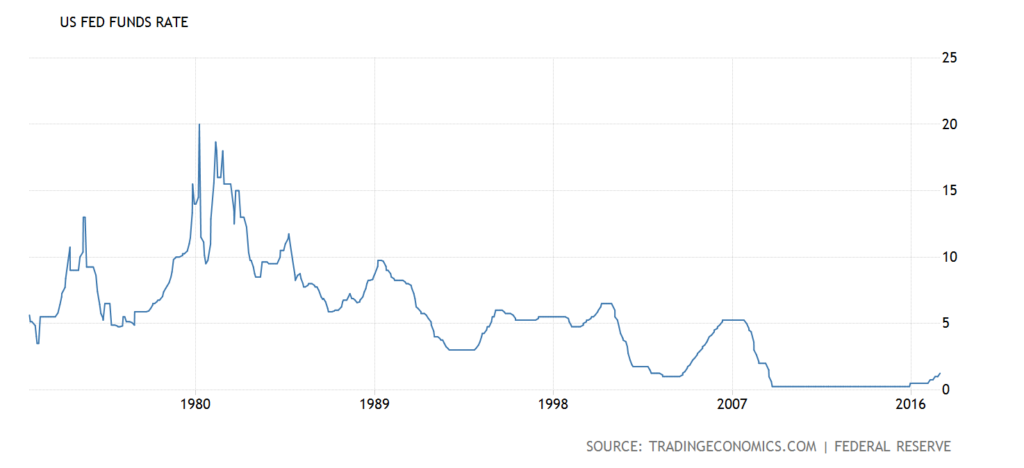
The US Fed Funds rate during Obama’s Presidency were the lowest ever for the longest ever
Now the Fed (probably by design to at least have the superficial appearance of impartiality) can point to the fact that they began raising interest rates in November of 2015. They also raised rates a second time in the 8 years of Obama’s reign on Dec 14, 2016, after Donald J. Trump won the presidential election.
In other words, leading up to and for nearly the first 7 years (2,521 days) of Obama’s presidency, the Fed Funds rate was set at 0.00-0.25%. For roughly the next year they were set at 0.25-0.50%. Then about a month after Trump’s election, for the last month of Obama’s presidency, interest rates were raised to 0.50–0.75%.
This is the most accommodative monetary policy the United States has ever had. This low interest rate policy began to be withdrawn as Obama prepared to vacate his residency at the White House.
Practically speaking rates were only hiked once in 8 years.
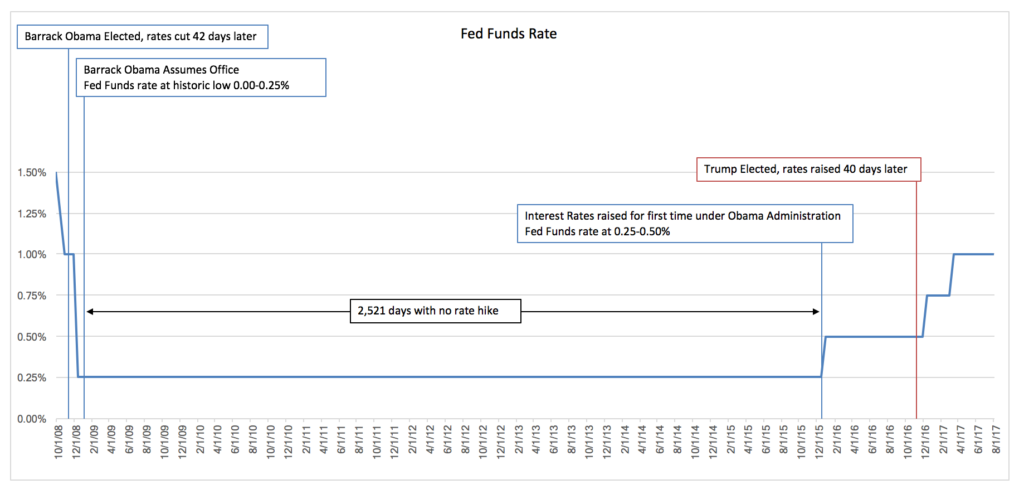
(Source: https://en.wikipedia.org/wiki/History_of_Federal_Open_Market_Committee_actions#cite_note-FOMC-15)
The Political Nature of the U.S. Federal Reserve
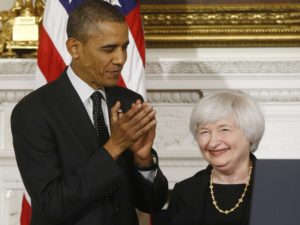
Democratic President Barrack Obama nominated Democratic party member Janet Yellen as US Federal Reserve Chairwoman
Despite the ridiculous and hollow rhetoric that the US Federal Reserve is impartial, it is a political institution that is integrated within the Federal Government.
Like all Federal Reserve Chairmen (or in this case Chairwoman) Janet Yellen was nominated by the President and confirmed by the Senate. Janet Yellen is a member of the Democratic party and was nominated by the de facto leader of the Democratic party.
Is a rational person really supposed to believe that Janet Yellen (or any other Fed Chair) who is a member of a political party, who is nominated by the leader of a political party, suddenly becomes a completely impartial overseer of the economy?
Of course not.
Obama got the High
The key takeaway is that the Obama administration was supported by an ultra-loose monetary policy that provided a strong tailwind for stock prices albeit at the expense of the real economy. A stock and bond bubble was also re-inflated.
The Fed has reversed gears and has begun a tightening cycle.
Obama was very fortunate to have gotten out of office before the next Federal Reserve fueled economic crisis hits. The economy is even weaker than it was before the great recession of 2008-2009.
Obama was the Fed’s sweetheart but he’s no longer in the office. So the Fed might not be as motivated to keep the bubble inflated and the charade going.
This is doubly true because Obama’s successor is universally despised. The powers that be would love to remove Trump from office and prevent him finishing out his first term, but at a minimum they will work to ensure he never sees a second term.
One way to do that is to crash the economy while Trump is president and hang the blame around his neck.
More on that in another article.













